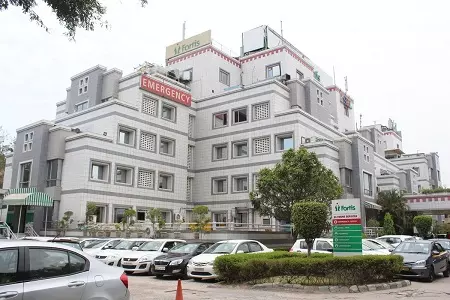What are Laparoscopy and Hysteroscopy?
Laparoscopic and hysteroscopy are minimally invasive surgical techniques that allow physicians to diagnose and treat many conditions of the pelvic organs. The procedures are usually outpatient and require shorter recovery times than surgery using larger incisions. In diagnostic laparoscopy, a gynecologist will insert a lighted tube called a laparoscope through a small incision near the navel and then view the outside of your uterus, fallopian tubes, ovaries, and the internal pelvic area. If your gynecologist determines you need surgery, she will insert narrow instruments through additional incisions.
During operative laparoscopy, the gynecologist may be able to remove small fibroids from the uterus or endometriosis, open blocked tubes, and destroy or remove cysts or ovarian polyps. Studies have shown that removing submucosal fibroids from the uterus improves fertility in women with uterine fibroids.
The gynecologist may also use a hysteroscope to visualize the inside of the uterus and cervix. First, the cervix is dilated with a series of dilators, which allows the telescope to see the uterus. Then, a clear solution (Hyskon or glycine) or carbon dioxide gas is injected into the uterus to expand it and provide a better view. The gynecologist can also use this opportunity to identify and release scar tissue or adhesions around the uterus, ovaries, and fallopian tubes.
While complications of diagnostic laparoscopy are relatively rare, they can occur. Symptoms include a tender or bruised belly button and vaginal discharge, bleeding, cramping, or bruising after surgery. If you have significant abdominal pain, a fever of 101 degrees Fahrenheit or higher, vomiting, drainage of pus from an incision, or severe bruising, contact IVF in Delhi doctor immediately for best services.
To know more: https://www.indiaivf.in/ivf-centre-in-delhi/
Laparoscopic and hysteroscopy are minimally invasive surgical techniques that allow physicians to diagnose and treat many conditions of the pelvic organs. The procedures are usually outpatient and require shorter recovery times than surgery using larger incisions. In diagnostic laparoscopy, a gynecologist will insert a lighted tube called a laparoscope through a small incision near the navel and then view the outside of your uterus, fallopian tubes, ovaries, and the internal pelvic area. If your gynecologist determines you need surgery, she will insert narrow instruments through additional incisions.
During operative laparoscopy, the gynecologist may be able to remove small fibroids from the uterus or endometriosis, open blocked tubes, and destroy or remove cysts or ovarian polyps. Studies have shown that removing submucosal fibroids from the uterus improves fertility in women with uterine fibroids.
The gynecologist may also use a hysteroscope to visualize the inside of the uterus and cervix. First, the cervix is dilated with a series of dilators, which allows the telescope to see the uterus. Then, a clear solution (Hyskon or glycine) or carbon dioxide gas is injected into the uterus to expand it and provide a better view. The gynecologist can also use this opportunity to identify and release scar tissue or adhesions around the uterus, ovaries, and fallopian tubes.
While complications of diagnostic laparoscopy are relatively rare, they can occur. Symptoms include a tender or bruised belly button and vaginal discharge, bleeding, cramping, or bruising after surgery. If you have significant abdominal pain, a fever of 101 degrees Fahrenheit or higher, vomiting, drainage of pus from an incision, or severe bruising, contact IVF in Delhi doctor immediately for best services.
To know more: https://www.indiaivf.in/ivf-centre-in-delhi/
What are Laparoscopy and Hysteroscopy?
Laparoscopic and hysteroscopy are minimally invasive surgical techniques that allow physicians to diagnose and treat many conditions of the pelvic organs. The procedures are usually outpatient and require shorter recovery times than surgery using larger incisions. In diagnostic laparoscopy, a gynecologist will insert a lighted tube called a laparoscope through a small incision near the navel and then view the outside of your uterus, fallopian tubes, ovaries, and the internal pelvic area. If your gynecologist determines you need surgery, she will insert narrow instruments through additional incisions.
During operative laparoscopy, the gynecologist may be able to remove small fibroids from the uterus or endometriosis, open blocked tubes, and destroy or remove cysts or ovarian polyps. Studies have shown that removing submucosal fibroids from the uterus improves fertility in women with uterine fibroids.
The gynecologist may also use a hysteroscope to visualize the inside of the uterus and cervix. First, the cervix is dilated with a series of dilators, which allows the telescope to see the uterus. Then, a clear solution (Hyskon or glycine) or carbon dioxide gas is injected into the uterus to expand it and provide a better view. The gynecologist can also use this opportunity to identify and release scar tissue or adhesions around the uterus, ovaries, and fallopian tubes.
While complications of diagnostic laparoscopy are relatively rare, they can occur. Symptoms include a tender or bruised belly button and vaginal discharge, bleeding, cramping, or bruising after surgery. If you have significant abdominal pain, a fever of 101 degrees Fahrenheit or higher, vomiting, drainage of pus from an incision, or severe bruising, contact IVF in Delhi doctor immediately for best services.
To know more: https://www.indiaivf.in/ivf-centre-in-delhi/
0 Комментарии
0 Поделились
669 Просмотры
0 предпросмотр


